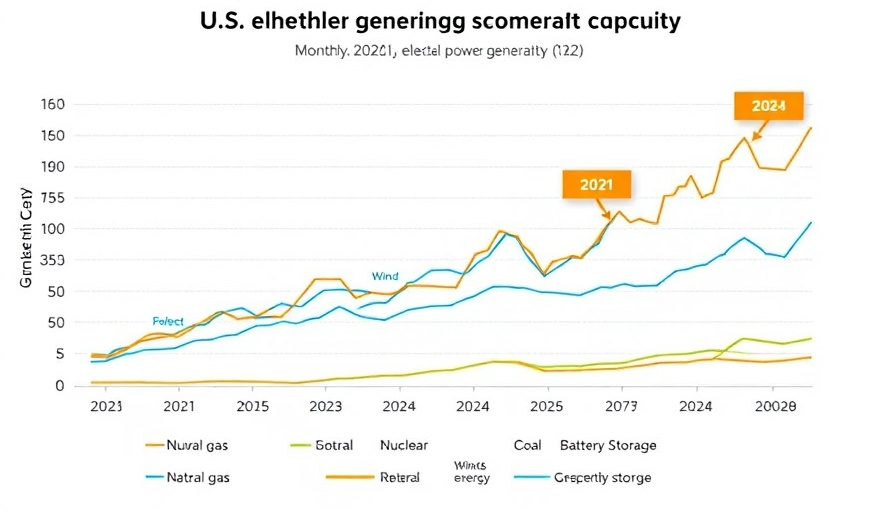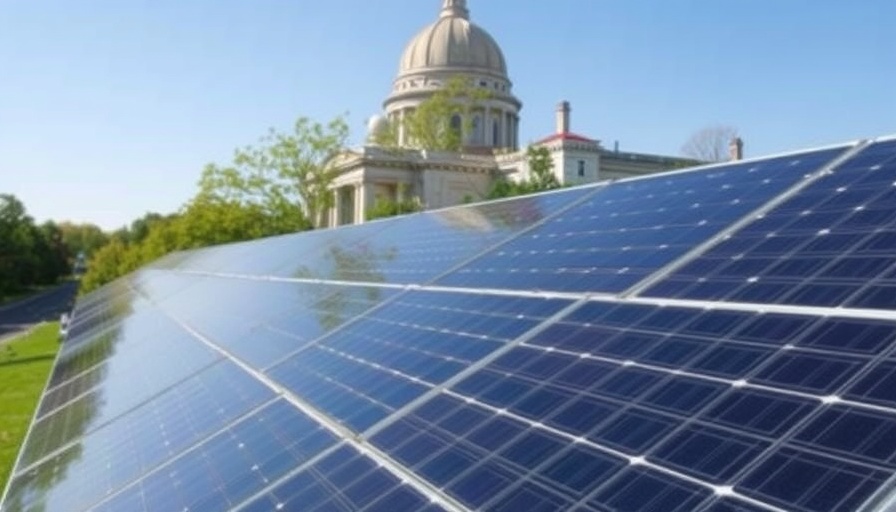
U.S. Solar Capacity Reaches New Heights
In a significant development for renewable energy, the U.S. added an impressive 30 gigawatts (GW) of solar capacity in 2024. This remarkable growth positions solar as the largest source of new generating capacity in the nation, a trend expected to continue in the upcoming years. As reported by the Solar Energy Industries Association (SEIA), solar's contribution to U.S. electricity generation has surged from a mere 0.1% in 2010 to over 6% today.
The Rise of Solar: A Historical Perspective
Over the last decade, the U.S. solar industry has transformed significantly, with 2024 marking the highest expansion recorded in two decades. This surge saw solar and storage make up a staggering 84% of all new electric generating capacity added to the grid. As a result, solar now powers over 37 million homes across the country. Analysts attribute much of this growth to supportive policies like the Inflation Reduction Act, which has stimulated investment and interest in clean energy solutions.
What This Expansion Means for Homeowners and Businesses
For homeowners aged 30-65 and eco-conscious consumers, the expansion of solar energy presents both opportunities and challenges. With energy costs soaring, more individuals are turning to solar solutions to enhance home value and reduce electricity bills. This trend is particularly appealing to those interested in sustainability, as solar energy offers a clean and renewable alternative. Additionally, businesses benefit from the economic advantages of lower operational costs through solar adoption.
Future Predictions: What Lies Ahead for Solar Energy?
The U.S. Energy Information Administration (EIA) predicts a robust future for solar, projecting increases in generation by an estimated 34% in 2025 and another 17% in 2026. This optimism is punctuated by the expectation that solar capacity in the U.S. will surpass wind capacity by 2027, marking a significant turning point for renewable energy dynamics in the country.
The Impact of Policy Changes on Solar Prospects
Looking ahead, the future of solar energy remains somewhat uncertain due to potential changes in federal policies. With a political landscape that could reshape energy strategies, solar stakeholders are closely monitoring the situation. The stability of investment and continued growth of the solar market depend heavily on support from policymakers. Furthermore, rising natural gas costs and shifts in consumer electricity usage habits are also critical factors influencing the solar sector.
Strategies for Homeowners: Going Solar with Confidence
For homeowners considering a switch to solar energy, navigating the selection of systems and installers is crucial. Utilizing resources like EnergySage provides consumers access to a range of pre-vetted solar installers who comply with local regulations and safety standards. This expands options for financing, ensuring homeowners can select the best solutions for their needs.
Statistical Insights on Solar Market Expansion
The statistics tell a compelling story: the solar market's installation pace is accelerating. By 2024, it is anticipated that 50 GW of new capacity will be installed, enough to power about 8.5 million households. The implications of this growth are profound, signaling a permanent shift towards a more sustainable energy landscape. As energy consumption grows with an annual increase of about 2%, the demand for solar solutions will only intensify.
The Broader Economic Implications of Solar Growth
The impact of solar energy extends beyond just homeowners and businesses; it drives broader economic growth. Domestic solar manufacturing has surged, tripling its production capacity within a year. According to SEIA, this not only creates jobs but also galvanizes the U.S. economy, fostering new industries aimed at supporting sustainable energy solutions.
In conclusion, the significant rise of solar capacity in 2024 underscores the U.S. commitment to renewable energy. With projections of continued growth and increasing consumer interest, now is the time for homeowners and businesses to consider how solar solutions can reshape their energy futures.
 Add Row
Add Row  Add
Add 



 Add Row
Add Row  Add
Add 
Write A Comment